
Propylene oxide NEW
| Price | Get Latest Price |
| Package | 25KG |
| Min. Order: | 1KG |
| Supply Ability: | 50000KG/month |
| Update Time: | 2023-09-23 |
Product Details
| Product Name: Propylene oxide | CAS No.: 75-56-9 |
| EC-No.: 200-879-2 | Min. Order: 1KG |
| Purity: 99% | Supply Ability: 50000KG/month |
| Release date: 2023/09/23 |
| CAS: | 75-56-9 |
| MF: | C3H6O |
| MW: | 58.08 |
| EINECS: | 200-879-2 |
| Product Categories: | Oxiranes;Simple 3-Membered Ring Compounds;Organics;organic chemical |
| Mol File: | 75-56-9.mol |
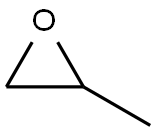 | |
| Propylene oxide Chemical Properties |
| Melting point | -112 °C |
| Boiling point | 34 °C(lit.) |
| density | 0.83 g/mL at 25 °C(lit.) |
| vapor density | 2 (vs air) |
| vapor pressure | 29.43 psi ( 55 °C) |
| refractive index | n |
| Fp | −35 °F |
| storage temp. | 2-8°C |
| solubility | 425-450g/l |
| form | Liquid |
| color | Clear |
| Odor | Ethereal; characteristic; sweet, alcoholyc; like natural gas. |
| explosive limit | 1.9-36%(V) |
| Water Solubility | 40 g/100 mL (20 ºC) |
| FreezingPoint | -112.13℃ |
| Merck | 14,7856 |
| BRN | 79763 |
| Henry's Law Constant | Not an environmentally important parameter because propylene oxide reacts rapidly with water |
| Exposure limits | TLV-TWA 50 mg/m3 (20 ppm) (ACGIH), 240 mg/m3 (100 ppm) (OSHA); IDLH 2000 ppm. |
| Stability: | Stable. Incompatible with acids, bases, oxidizing agents, copper, copper alloys, brass, bronze, iron, metal chlorides, peroxides and a wide variety of other materials. Reacts with compounds containing labile hydrogen. Extremely flammable - note low boiling point, low flash point and very wide explosion limits. Moisture sensitive. |
| LogP | 0.030 |
| CAS DataBase Reference | 75-56-9(CAS DataBase Reference) |
| NIST Chemistry Reference | Propylene oxide(75-56-9) |
| IARC | 2B (Vol. Sup 7, 60) 1994 |
| EPA Substance Registry System | Propylene oxide (75-56-9) |
| Propylene oxide Usage And Synthesis |
| Chemical properties | Propylene oxide (PO) is a clear colorless volatile liquid with an ethereal odor. The industrial products are the racemic mixture for two optical isomers. It can be partially miscible with water [the solubility at 20 °C in water is 40.5% by weight; water solubility in propylene oxide is 12.8% by weight]. It can be miscible with ethanol and ethyl ether and form a binary azeotrope with dichloromethane, pentane, pentene, cyclopentane and cyclopentene. Propylene oxide molecule contains an asymmetrical carbon atom, being able to carry out many chemical reactions. It has slightly lower chemical activity than ethylene oxide with reaction with active hydrogen (such as water, alcohols, acids, amines) containing material, with ring-opening to form diol, alcohol ether and alcohol amine. Hydrolysis reaction can generate propylene glycol with etherification reaction leading to the formation of alcohol ether. Under the action of catalyst, it can produce polyether polyol. Reaction with glycerol can generate polyether triol. It can react with carboxylic acid to generate ester. It can react with ammonia, leading to the formation of alcohol amine. It can react with hydrogen halide to generate halogenated alcohol. It can react with hydrogen sulfide to generate mercaptan formation. It can react with thiophenol to generate hydroxypropyl benzene sulfide. Under the catalysis of the trimethylamine, it can react with carbon disulfide, leading to the formation of allyl trithiocarbonate. Under the action of catalyst, it can be isomerized to generate propionaldehyde. Propylene oxide is toxic with irritating effect on skin and eyes, even at a concentration of 1%. Its vapor can cause stimulation of respiratory organs and eyes with inhaled causing the inhibition on the central nervous system. Rat oral LD50:930mg/kg. The maximum allowable concentration of the workplace is 20 × 10-6. 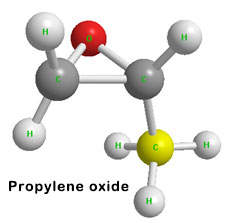 Figure 1 the three-dimensional structure of propylene oxide. |
| Uses | Propylene oxide is an excellent low-boiling solvent and raw material of organic synthesis, being able to be used for the preparation of propylene glycol, glycerol, propylene glycol, polyester resin, foam and surfactants. It can also be used as the solvent of cellulose acetate, nitrocellulose and resin solvents. Propylene oxide can react with ammonia to produce isopropanolamine (monoisopropanolamine, diisopropanolamine and triisopropanolamine). Isopropanolamine is alkaline, being able to absorb acidic gas, widely used in gas purification such as the desulfurization of synthetic ammonia industry and decarbonation.
|
| Identification test | Solubility: 1g can be dissolved in 1.7ml water; miscible in ethanol and ether (OT-42). |
| Content analysis | Same as the content analysis in "07115, ethylene oxide", but the formula can be changed to: Propylene oxide (%) = NaOH solution volume (ml) x 0.0581/sample mass x 100% |
| Toxicity | LD50:580mg/kg (mice, oral) direct inhalation of its vapor can cause vomiting, diarrhea, coma. Propylene oxide is less toxic than ethylene oxide with stimulating effect of the major role, together with mild anesthetic and original pulp toxicity. Direct contact can stimulate the skin with severe cases causing skin necrosis. The olfactory threshold was 360 mg/m3. At a few minutes after inhalation of high concentrations can cause poisoning, eye and upper respiratory tract irritation symptoms, difficulty in breathing, head pain, dizziness, weakness, calf muscle spasms, gait instability, nausea, vomiting and diarrhea, restlessness, delirium and coma. During the disease course, it can be seen of elevated blood pressure, arrhythmia, myocardial damage, gastrointestinal bleeding, toxic intestinal paralysis and liver and kidney damage. Because of its poisoning symptoms may be related to increased levels of histamine and other biologically active substances, it can be treated with anti-histamine drugs and sodium thiosulfate. The threshold for epoxypropane in the air at workplace is tentatively set at 240 mg/m3 (TLV-TWA, US, 1980), with a maximum allowable concentration of 1 mg/m3 (Sue, 1972). |
| Usage limit | The maximum allowable concentration in the place of disinfection is 1mg/m3. |
| Production method | There are mainly chlorohydrin method and indirect oxidation. 1. Chlorohydrin method; apply propylene, chlorine and water for being acidified by hypochlorous at 60 °C under normal pressure to generate chloropropanol, followed by saponification, condensation and distillation to derive. 2. Indirect oxidation: it is derived from the oxidation of ethylbenzene (or isobutane, cumene, etc.) to form hydrogen peroxide ethylbenzene (or tert-butyl hydroperoxide, cumene hydroperoxide, etc.), which further has epoxidation with propylene in the catalysis of naphthenic acid molybdenum. (3) Electrochemical Chlorohydrin Method: this method is based on the principle that the aqueous solution of sodium chloride (or potassium chloride, sodium bromide, sodium iodide) for electrolysis to generate chlorine and sodium hydroxide. Send the propylene in the anode area to generate chlorine alcohol, which further reacts with sodium hydroxide to generate propylene oxide in the cathode area. The preparation method is as follows. (1) Chlorohydrin method Take propylene as raw materials, followed by hypochlorous acidification, saponification, and then enrichment and distillation to derive the products. The reaction of propylene with hypochlorous acid is carried out in an aqueous solution, and the chlorine gas is mixed with hypochlorous acid and hydrochloric acid in water. The reaction temperature is 30-50 DEG C, and the produced aqueous chloropropanol and 10% lime milk are saponified in a saponification reactor for saponification; the saponification kettle is sent into the water vapor, steaming out the propylene oxide, and then subject to condensed distillation derived products. CH3CH = CH2 + HOCl →CH3CHOHCH2Cl + CH3CHClCH2OH This method requires a low purity of propylene, and the yield is high, but it consuming large amounts of chlorine and lime milk, equipment with serious corrosion on the device, resulting in environmental pollution problems. It is mainly adopted in China to produce propylene oxide. (2) Peroxide method The main process is the manufacture of organic hydrogen peroxide. Apply peroxide for oxidation of propylene. This reaction is always liquid phase reaction either in the production of organic hydrogen peroxide or in the presence of a catalyst for the transfer of oxygen from the peroxide to the propylene molecule. In addition to produce the propylene oxide as the main product, there are also co-products. Current ways that has realized industrialization include ethyl benzene Haakon method and isobutane Haakon method. Ethylbenzene Haakon mainly adopts ethylbenzene as raw material for production of ethylbenzene hydroperoxide by oxidation. Under the catalyst of copper naphthenate, it is subject to propylene epoxidation reaction, generating propylene oxide as well as alpha-phenylethanol simultaneously, followed by dehydration to give the styrene. The reaction temperature of ethylbenzene oxidation is 130-150 ℃, the pressure is 0.07-0.14 MPa, the selectivity of generating ethylbenzene hydroperoxide is 90%; the temperature of epoxidation is 50-120 ℃; The pressure is between atmospheric pressure to 0.864 MPa. For example, a mixture of 14% of ethylbenzene hydroperoxide, 35% of propylene, 50% of ethylbenzene and 1% of α-phenylethanol is added to 0.4% of naphthenic acid manganese naphthenate (nMo/nNa = 2 , Molar ratio) to be as the catalyst for reaction at 1.5 h at 100 ℃, resulting conversion rate of ethylbenzene hydroperoxide, 99% and selectivity of propylene oxide as 78%. The reaction product can be obtained by distillation of propylene oxide to obtain the finished product. The α-phenylethanol, in the dehydration reactor, is subject to dehydration at 250-280 ℃ using TiO3-Al2O3 as catalyst, resulting a conversion rate to styrene of 100% with a selectivity of 92%. The features of the method: low cost, being economic and reasonable, less waste, with co-production of styrene. Isobutane Haakon method uses isobutane as raw material, via oxidant tert-butyl hydroperoxide, further being reacted with propylene to generate propylene oxide and tert-butyl alcohol. The whole process is similar to ethylbenzene Haakon method. Manufacturing of tert-butyl hydroperoxide was carried out at 100~110 °C without catalyst, usually using tert-butyl hydroperoxide as initiator. Epoxidation of propylene was carried out under the conditions of reaction temperature 121 °C and pressure of 4.1 MPa to be carried out in the presence of molybdenum catalyst. The reaction time is 0.5 h with the yield of propylene oxide 88% (peroxides), selectivity of 81%. (CH3) 2CHCH3 + O2 → (CH3) 3COOH + (CH3) 3COH (CH3) 3COOH |
| Hazards & Safety Information | Category : Flammable liquids Toxicity classification: highly toxic Acute toxicity: Oral-Rat LD50: 380 mg/kg; Oral-mouse LD50: 440 mg/kg Stimulation Data: Skin-Rabbit 415 mg Moderate; Eyes-Rabbit 20 mg Severe Explosive and hazardous properties: Being explosive in case of ammonia, chlorosulfonic acid, hydrochloric acid, hydrogen fluoride, nitric acid, sulfuric acid and fuming sulfuric acid. Flammability and hazard characteristics: it is combustible in case of fire, high temperature and oxidant with combustion generating irritant smoke Storage and transportation characteristics Treasury: ventilated, low-temperature and dry; store it separately from oxidants and acids Extinguishing agent: dry powder, dry sand, carbon dioxide, foam, 1211 extinguishing agent Occupational Standard: TWA PPM 100 |
| Description | Propylene oxide is an allergic and irritant agent, used as a solvent and raw material in the chemical industry as starting material and intermediate for a broad spectrum of polymers. |
| Chemical Properties | Propylene oxide is soluble in water and miscible with most organic solvents. It is found to be an excellent low-boiling solvent for cellulose acetate, nitrocellulose, adhesive compositions and vinyl chloride-acetate resins. It is also a solvent for hydrocarbons, gums and shellac. Some of its uses are as a solvent and stabilizer in DDT aerosol-type insecticides, and as a fumigant and food preservative. Since it is an acid acceptor, it is also used as a stabilizer for vinyl chloride resins and other chlorinated systems. |
| Physical properties | Propylene oxide is a colorless liquid with an agreeable, ether-like odor. Experimentally determined detection and recognition odor threshold concentrations were 24 mg/m3 (10 ppmv) and 84 μg/m3 (35 ppmv), respectively (Hellman and Small, 1974). |
| Uses | It can be used as a dehydrating agent for the preparation of slides in electron microscopy. Occupational dermatitis was also reported while using a skin disinfectant swab. |
| Uses | Chemical intermediate in preparation of polyethers to form polyurethanes; in preparation of urethane polyols and propylene and dipropylene glycols; in preparation of lubricants, surfactants, oil demulsifiers. As solvent; fumigant; soil sterilant. |
| Uses | Propylene oxide is used as a fumigant forfoodstuffs; as a stabilizer for fuels, heat-ing oils, and chlorinated hydrocarbons; asa fuel–air explosive in munitions; and toenhance the decay resistance of wood andparticleboard (Mallari et al. 1989). Recentstudies indicate that the fumigant potentialof propylene oxide enhances at a low pres-sure of 100 mm Hg which could render it asan alternative to methyl bromide for rapiddisinfection of commodities (Isikber et al.2004). |
| Definition | ChEBI: An epoxide that is oxirane substituted by a methyl group at position 2. |
| Production Methods | Propylene oxide is synthesized commercially from propylene through the intermediate propylene chlorohydrin. It also can be made by peroxidation of propylene using alkylhydroperoxides, but this method produces coproducts as well, often styrene or cumene. Propylene oxide is also synthesized via oxidation of propylene with hydrogen peroxide, which produceswater as the only coproduct. |
| General Description | A clear colorless volatile liquid with an ethereal odor. Flash point -35°F. Boiling point 95°F. Density 6.9 lb./gal. Flammable over a wide range of vapor-air concentrations. If contaminated, may polymerize with evolution of heat and possible rupture of container. Vapors irritate eyes, skin, and respiratory system. Prolonged contact with skin may result in delayed burns. Vapors heavier than air. Used as a fumigant, in making detergents and lubricants, and to make other chemicals. |
| Air & Water Reactions | Highly flammable. Soluble in water. |
Packing &shipping&Payment
Shipping:by sea or by air
Payment:T/T,western union,moneygram
Packaging Details drum
Port:Tianjin
Lead Time :
| Quantity(Kilograms) | 1 - 10000 | >10000 |
| Est. Time(days) | 5 | To be negotiated |
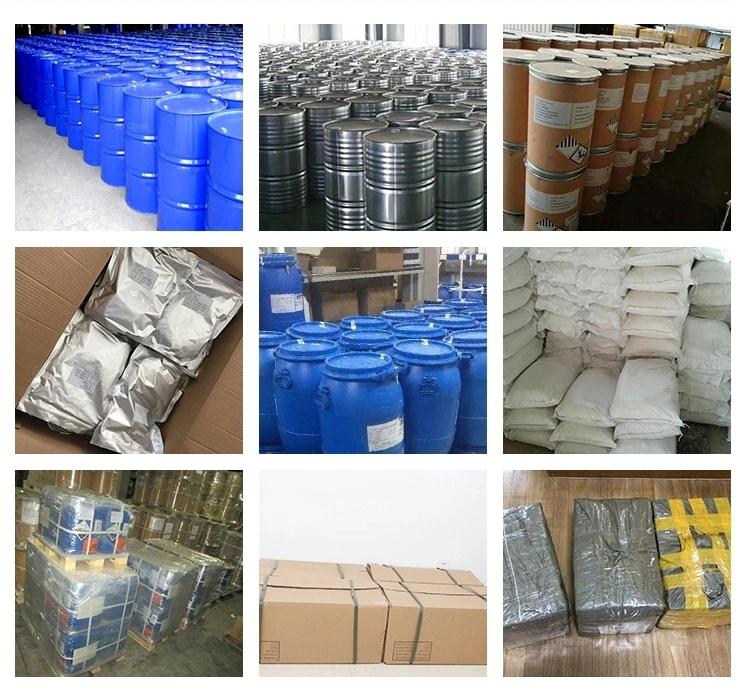
 Company information
Company information
Hebei Mojin Biotechnology Co., Ltd, Our company is a professional in 4'-Methylacetophenone,Levamisole hydrochloride ,N-Methylformamide and other chemical reagents research and development production enterprises. Our business covers more than 30 countries, most of the big customers come from Europe, America and other countries in the world, we can guarantee the quality and price. In recent decades, with the efforts of all employees, we have established many cooperative companies in shandong, henan, guangdong and other places. Our corporate purpose is based on the market, enhance the strength, take the road of scientific and environmental sustainable development, relying on the country. Technology r & d center, increase the investment in r & d, based on the domestic market, expand the international market, manufacturing quality products, sincere service to the society, into a modern, ecological, scientific and technological enterprise world.
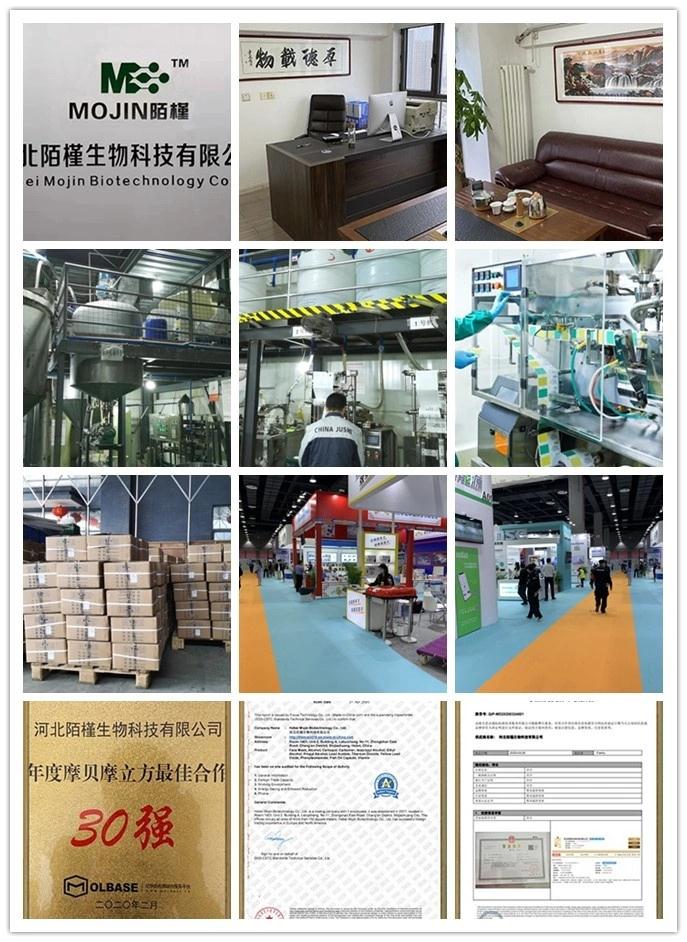 Advantage
Advantage
In stock
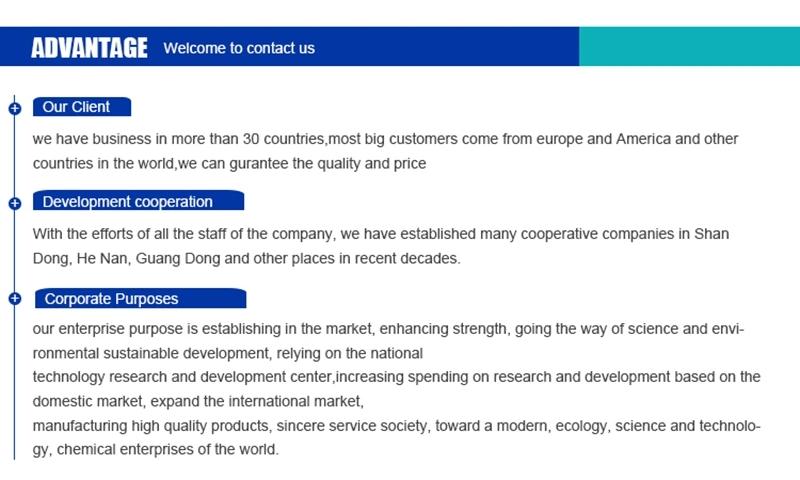
Company Profile Introduction
You may like
Recommended supplier
| Product name | Price | Suppliers | Update time | |
|---|---|---|---|---|
| $100.00/1KG |
VIP1Y
|
Henan Fengda Chemical Co., Ltd
|
2023-12-26 | |
| $1.10/1g |
VIP2Y
|
Shaanxi Didu New Materials Co. Ltd
|
2022-05-18 | |
| $15.00/1KG |
Zhuozhou Wenxi import and Export Co., Ltd
|
2021-06-27 | ||
| $10.00/200Kg/Drum |
VIP6Y
|
Hebei Guanlang Biotechnology Co., Ltd.
|
2020-11-19 | |
| $1.00/1g |
VIP5Y
|
Career Henan Chemical Co
|
2020-01-10 | |
| $1.00/1KG |
VIP5Y
|
Shaanxi Dideu Medichem Co. Ltd
|
2020-01-07 |
- Since: 2017-12-08
- Address: Building A, Enjoy city, Zhongshan East Road, Shijiazhuang city, Hebei province
13288715578
sales@hbmojin.com


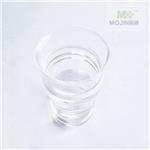
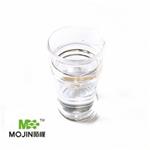
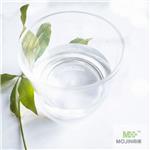
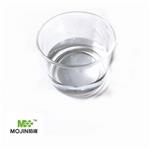
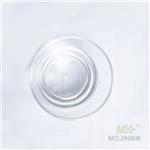
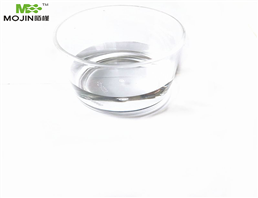
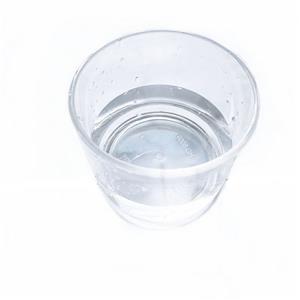
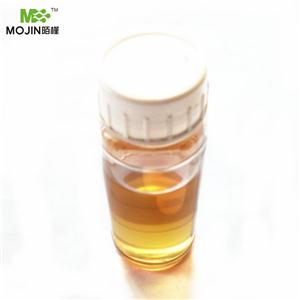

 China
China